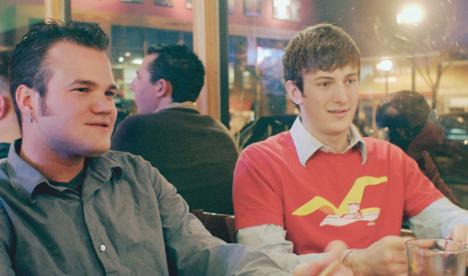
Caroline Wong
Somewhere in the sea of one-way streets and unsightly construction lies downtown Raleigh.
As part of the Downtown Alliance’s efforts to create a more visitor-friendly environment, they have unveiled a plan to help people feel more comfortable with finding their way around the area.
“It’s the beginning of a ‘way-finding’ system,” said Nancy Hormann, President and CEO of the Downtown Raleigh Alliance. “It will make coming to downtown easier.”
Hormann said she is aware of how intimidating it can be to navigate downtown, and said she hopes this new system will assist Raleigh natives and visitors alike.
“When you come to downtown, you just don’t know where to go,” she said. “[With the new system], if you looked at the color of the signs around you, you would know exactly where you are.”
David Sloan, manager of the 42nd Street Oyster Bar, said he gets telephone calls asking for directions “everyday.”
Downtown is “too congested” for Ben Parker, a senior in turf management, who said the area would benefit from maps and directories.
“I hate it now,” Parker said. “I get lost.”
Kati Cadenhead, a junior in political science, said she is “not a fan” of downtown Raleigh. A native of Charlotte, she said she’s used to “big buildings and people all the time.” Raleigh she said, “just doesn’t have the same scene.”
“It’s not a downtown,” Cadenhead said. “The first time I went, I was like ‘Where is it?'”
According to Hormann, the plan was carefully drafted because “people don’t understand what downtown is.”
Michael Ellis, a senior in political science, said he only goes downtown from time to time to eat at places like the Armadillo Grille.
“It’s too crowded,” Ellis said. “And I’m not familiar with the area.”
Hormann said she wants downtown to appeal more to college students, among students, because of the “variety” the area has to offer.
“Downtown is very appealing to that age group,” Hormann said. “They don’t want the same thing every day.”
The “marketing and way-finding system” will consist of a new multi-colored logo that will also serve as a map, according to a newsletter published by the Downtown Raleigh Alliance.
“Each district uses a separate color to connote its distinctiveness,” according to the newsletter. “The districts fit together like pieces of a puzzle.”
According to Hormann, the five areas of downtown represented — Moore Square, Fayetteville Street, the Warehouse District, the Capital District and Glenwood South — will be signified with green, purple, red, blue and orange, respectively.
Fayetteville Street will be the first district to display the new logo and mapping system because “they’re redoing the street” already, Hormann said. She added that the entire process of incorporating the new displays to their respective districts should be completed within 18 months.
Sloan said although college students dine at the establishment “frequently,” the 42nd Street Oyster Bar doesn’t cater to college students as much as it used to since “Glenwood Avenue built up its bar system.”
The newsletter said the alliance wants to convey that there is “something for everybody” downtown.
“There is such a variety,” Hormann said. “[There is] so much to do with all of the restaurants and venues for music.”
Cadenhead said the mapping plan sounds interesting, but has a suggestion about color choice.
“Let’s just hope one of the colors is red, and there is no Carolina blue,” Cadenhead said. “I would not go to the Carolina blue district — just on principle.”